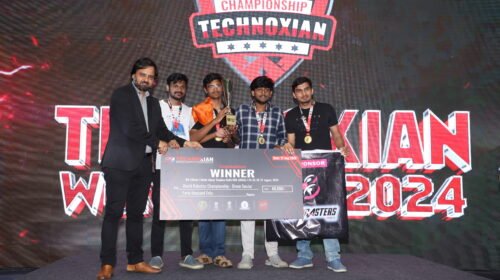Science, Technology, Engineering, and Mathematics (STEM) education is the cornerstone of innovation, economic growth, and societal progress. In India, a nation with a burgeoning population and a growing demand for skilled professionals in STEM fields, it is crucial to enhance STEM education. This article explores several strategies aimed at improving STEM education in India, fostering a generation of learners who can drive the country’s technological advancements and global competitiveness.
- Revamping Curriculum and Pedagogy
To make STEM education more engaging and relevant, there is a need to revamp the curriculum and pedagogical approaches. This can involve:
- Incorporating Practical Learning: Emphasizing hands-on learning and experimentation to foster critical thinking and problem-solving skills.
- Contextualizing Content: Integrating real-world examples and applications to demonstrate the practical relevance of STEM subjects.
- Interdisciplinary Approach: Encouraging cross-disciplinary learning to promote a holistic understanding of STEM concepts.
- Teacher Training and Professional Development
Investing in teacher training and professional development programs is essential to enhance the quality of STEM education. Strategies include:
- Up-to-Date Knowledge: Ensuring teachers are well-versed in the latest developments in their respective fields.
- Pedagogical Training: Equipping educators with effective teaching methods that encourage student engagement and participation.
- Continuous Learning: Encouraging teachers to pursue lifelong learning and stay current with evolving STEM trends.
- Promoting STEM Culture
Fostering a culture of curiosity and innovation is vital. To achieve this, India should:
- Promote Extracurricular Activities: Encouraging students to participate in STEM-related clubs, competitions, and projects.
- STEM Role Models: Showcasing successful STEM professionals as role models to inspire the younger generation.
- Community Involvement: Involving local communities in STEM initiatives to broaden participation and interest.
- Enhancing Infrastructure and Access
Access to quality STEM education should not be limited by geography or socio-economic status. Strategies include:
- Digital Learning: Expanding access to online resources and e-learning platforms for students in remote areas.
- Science and Tech Parks: Establishing science and technology parks to provide hands-on experience and exposure to cutting-edge technologies.
- Scholarships and Financial Support: Offering financial incentives and scholarships to underprivileged students pursuing STEM education.
- Industry-Academia Collaboration
Building bridges between educational institutions and industry can help align education with industry needs. Strategies include:
- Internship Programs: Facilitating student internships and industry visits to gain practical experience.
- Curriculum Advisory Boards: Involving industry experts in curriculum development to ensure it meets industry standards.
- Research Partnerships: Collaborating on research projects to address real-world challenges and provide students with valuable experience.
- Assessment and Feedback Mechanisms
Regular assessment and feedback mechanisms can help identify areas for improvement. Strategies include:
- Standardized Testing: Implementing standardized tests to gauge students’ STEM proficiency.
- Feedback Loops: Collecting feedback from students, teachers, and parents to refine STEM education strategies.
- Data-Driven Decision Making: Using data to make informed decisions and allocate resources effectively.
Enhancing STEM education in India is not merely a goal; it is a necessity for the nation’s future. By revamping the curriculum, investing in teacher training, fostering a STEM culture, improving access, promoting industry collaboration, and implementing effective assessment mechanisms, India can prepare its youth to tackle the challenges and opportunities of the 21st century. With these strategies in place, India can produce a skilled STEM workforce that can lead the country towards innovation, economic growth, and global recognition.





